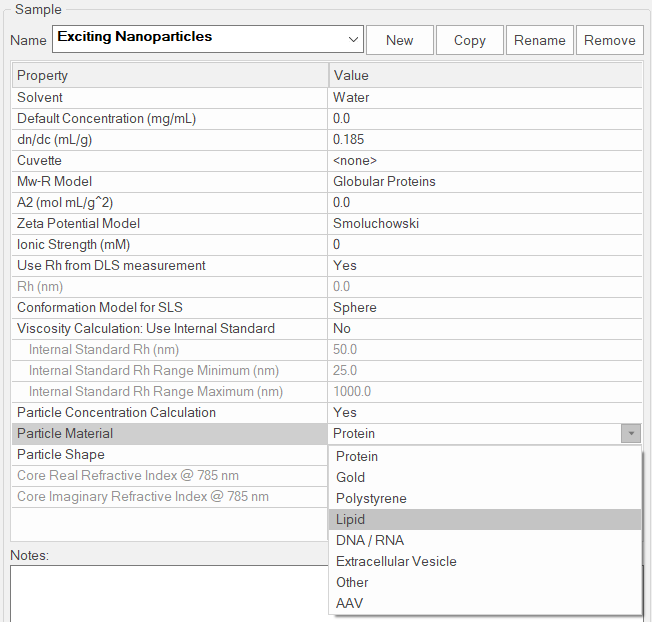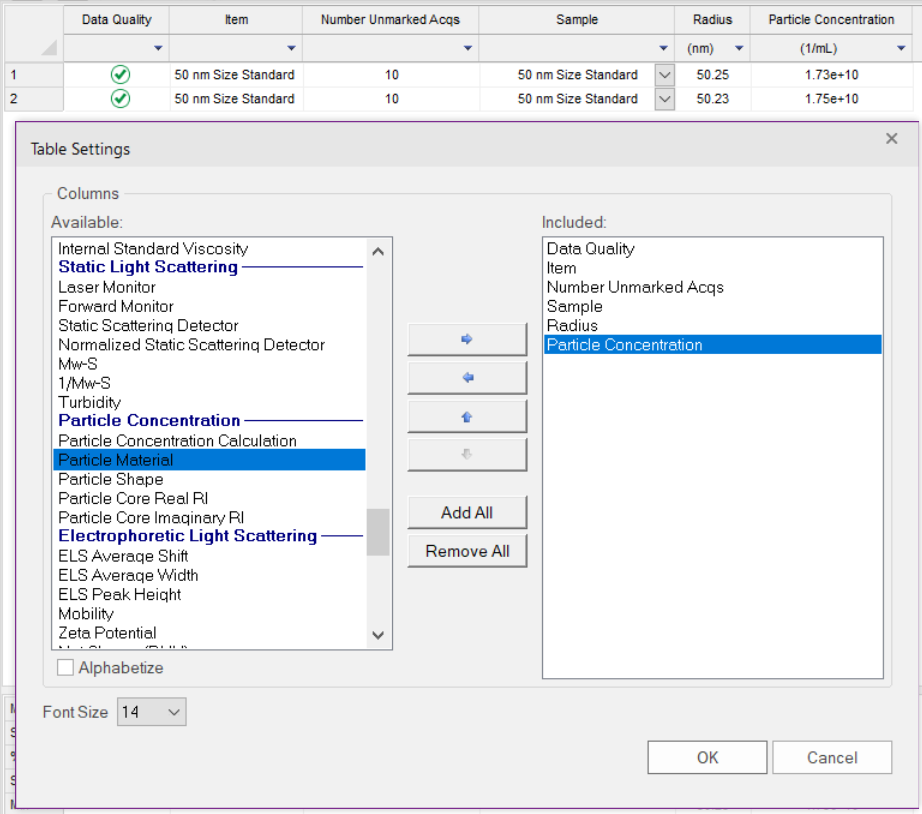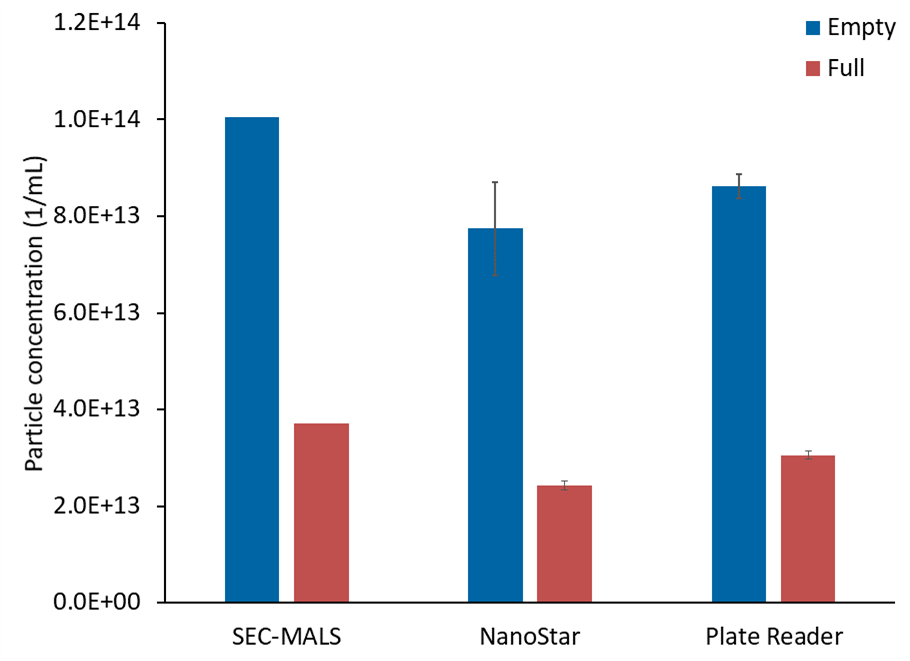How do I use the new particle concentration feature in DYNAMICS™?

Introduction
Quantification of particles is of interest in many applications, such as viruses and virus-like particles for gene delivery and biological nanoparticles or inorganic particles for drug delivery and imaging. Particle concentration in batch mode can be a high-throughput tool for screening before investing in method development for absolute concentration from size-exclusion chromatography combined with multi-angle light scattering (SEC-MALS).
Particle concentration is now calculated by DYNAMICS 7.9 from the hydrodynamic radius, measured by dynamic light scattering (DLS), and the total static light scattering (SLS) intensity which can be determined with the DynaPro™ ZetaStar™, NanoStar™ or Plate Reader 4. DYNAMICS uses the Lorenz-Mie model for a solid sphere for determining the particle concentration based on the hydrodynamic radius and SLS intensity at the instrument’s scattering angle.
Setting up a
DYNAMICS Sample
The parameters required to perform this calculation are stored in the DYNAMICS Sample definition. In the Samples parameter node, select “Yes” to enable the Particle Concentration Calculation for a particular Sample. Then, enter the Particle Material and Shape from the choices provided. Since DYNAMICS uses the absolute refractive index (aRI) of the Sample and its corresponding Solvent in the calculations, this value must be specified for each sample. The dn/dc, which is required for Mw-S calculations in DYNAMICS, is not used for particle concentration.
Calculating Particle Concentration and
Viewing Results
DYNAMICS provides a library of materials from which to choose for each Sample definition. Materials include protein, gold, polystyrene, lipid, DNA/RNA, extracellular vesicle, and AAV. Users may also specify their own values by selecting “Other” as the material. The aRI of viruses and virus-like particles can vary depending on the payload. When measuring adeno-associated virus (AAV), for example, we recommend specifying an aRI of 1.43 for 100% empty AAV (Vg/Cp = 0), 1.47 for 100% full AAV (Vg/Cp = 1), and 1.45 for a mixture of empty and full AAVs or for unknown Vg/Cp.
To display the particle concentration of your sample, right-click on the data grid table and choose the Table Settings for Particle Concentration. Particle concentration is displayed in a column in the data grid for each measurement in units of 1/mL.
Particle Concentration
The graph shows results for particle concentration calculations for filled and empty adeno-associated virus (AAV) using SEC-MALS, a NanoStar and a DynaPro Plate Reader 4.
Particle concentrations for AAV calculated using the Plate Reader and NanoStar match well with those from the absolute method of SEC-MALS, allowing DLS to be used for high-throughput screens for aggregate content with no need for method development.
Conclusion
Particle Concentration measurements are only available in DYNAMICS 7.9 and higher for the DynaPro ZetaStar, NanoStar, and Plate Reader 4. For more details see the DYNAMICS 8 User’s Guide or check out TN2011: Performing Particle Concentration Measurements in DYNAMICS.
Do you have a question? Contact our experts here in Customer Support. We’re happy to help! Call +1 (805) 681-9009 option 4.



